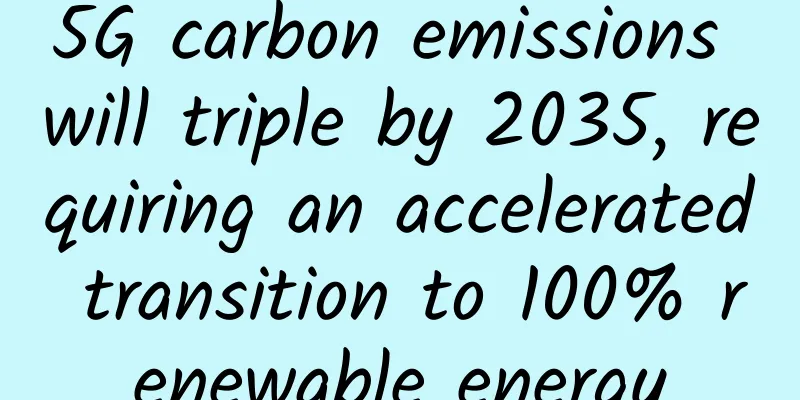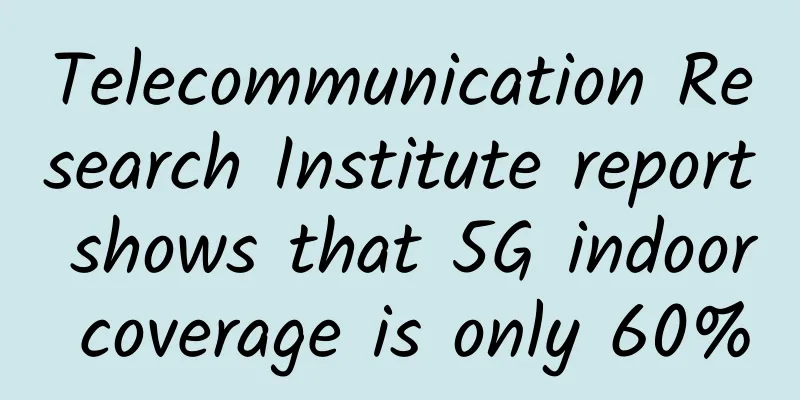5G carbon emissions will triple by 2035, requiring an accelerated transition to 100% renewable energy

|
On May 28, the Metrology and Testing Center of the Fifth Institute of Electronics of the Ministry of Industry and Information Technology (Guangzhou CESI Metrology and Testing Center) released the report "China's Digital Infrastructure Decarbonization Road: Data Center and 5G Carbon Reduction Potential and Challenges (2020-2035)" (hereinafter referred to as the "Report"), predicting the energy consumption and carbon emission trends of China's digital infrastructure such as data centers and 5G.
The report points out that after China fully achieves its carbon peak in 2030, carbon emissions from digital infrastructure will continue to grow, and has become a new growth point for energy consumption and carbon emissions. It is necessary to accelerate the transition to 100% renewable energy and achieve carbon neutrality as soon as possible. The report predicts that by 2035, China's total electricity consumption for data centers and 5G will be about 2.5-3 times that of 2020, reaching 695.1-782 billion kWh, accounting for 5-7% of China's total electricity consumption. At the same time, the total carbon emissions from China's data centers and 5G will reach 230-310 million tons in 2035, accounting for about 2-4% of China's carbon emissions, equivalent to the current carbon dioxide emissions of two Beijing cities. Among them, the carbon emissions of data centers will increase by up to 103% compared with 2020, and the carbon emissions of 5G will increase by up to 321%. In contrast, key emission industries such as steel, building materials, and non-ferrous metals are expected to peak their carbon emissions and begin to decline around 2025. The "lock-in effect" of carbon emissions from digital infrastructure will become an important challenge for China to achieve carbon peak and further carbon neutrality. The report suggests that accelerating the transition to 100% renewable energy can fundamentally help the digital infrastructure industry reduce carbon emissions and is the priority path for the industry to move toward carbon neutrality. Data centers and 5G can apply renewable energy by investing in distributed and centralized renewable energy projects, purchasing renewable energy from the market, and subscribing to green electricity certificates, while exploring application scenarios combining energy storage with renewable energy. To this end, the "Report" makes the following recommendations to relevant companies: First, set a goal of achieving 100% renewable energy by 2030, and further propose a full-scope (scope 1, 2, 3) carbon neutrality goal by 2030; second, expand the scale of corporate renewable energy procurement, actively communicate with key stakeholders, and help further breakthroughs in market-oriented renewable energy procurement mechanisms; third, further enhance energy information disclosure, and disclose greenhouse gas emissions and energy consumption information. |
>>: Wi-Fi 6 is just being used, and Wi-Fi 7 from the three major players is already on the way
Recommend
Powered by EMUI 9.1, Huawei Enjoy 10S brings users a brand new smart experience
In the era of information explosion, consumers ar...
Average tariffs to drop by another 10%. Senior management has given operators another task target! Are you ready?
At this year's two sessions, the top leadersh...
Looking at 5G from a different perspective: Don’t talk about technology, talk about demand
[[280015]] 4G changes life, 5G changes society. W...
[Black Friday] Sharktech: 50% off on all cloud products, 10Gbps unlimited traffic server $349/month-2*Gold 6148/128G/2TB NVMe/Los Angeles and other data centers
Sharktech also released a promotion during this y...
Global spectrum auctions valued at $27.5 billion in 2020
On February 8, according to data released by GSA,...
Understanding TCP/IP protocol stack HTTP2.0
[[332931]] 1 Introduction Today, let's study ...
Our company’s “Double 11” flow control plan, come and copy our homework!
[[430197]] Image from Baotu.com If the scenic spo...
IDC: Global Ethernet switch and router markets mixed in the second quarter
According to the Ethernet Switch and Router Quart...
This move can save tens of billions of yuan in 5G construction!
Recently, two major European operators, Vodafone ...
It is reported that the Ministry of Industry and Information Technology adjusted the inter-network settlement standards: China Telecom was disappointed, and China Mobile was removed from the list
According to online reports, the Ministry of Indu...
The co-chair of the IPv6 Working Group pointed out the root cause of the slow development of IPv6 in one sentence!
Today, the Internet world is slowly transitioning...
Buildings are finding ways to incorporate 5G into IoT networks
The long-awaited 5G technology has finally arrive...
If the Internet connection becomes slow, you don't need to change the router and restart it to restore it to full health
When you use WiFi at home to surf the Internet, i...
LOCVPS: 30% off on CN2 line KVM in the Netherlands, 2G package renewal in Tai Po, Hong Kong, starting from 44 yuan per month
LOCVPS (Global Cloud) is an early established Chi...









